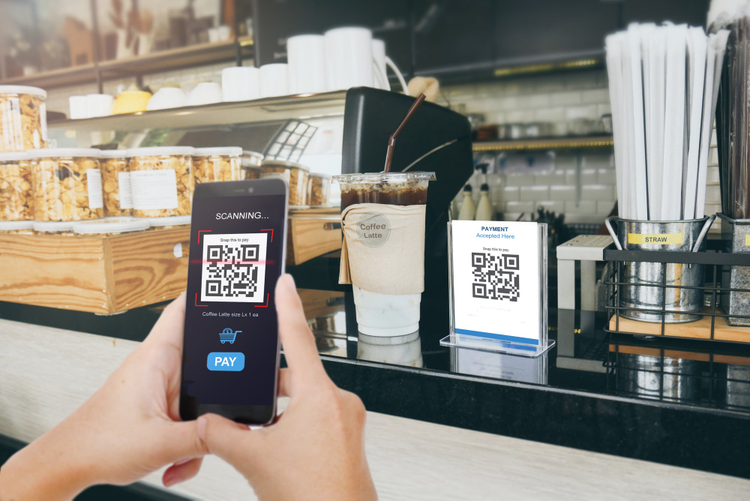QR codes, or “quick response” codes, are a type of barcode, readable with digital devices such as smartphones. These barcodes, which look like square-shaped grids, hold much more information than a traditional barcode that you would see on food packages in grocery stores, for example. QR codes are used by companies to track products in a supply chain and they are often used by marketers who want people to scan the code with their phones and visit a website.
According to Nicolas Rivero of Quartz, the COVID-19 pandemic exposed th utility and innovation of QR codes to the general public. Restaurants, retailers, and pharmacies, for example, have been jumping on board with QR codes, to provide an easy, convenient way for consumers to get what they need, whether that’s food, clothes, or healthcare.
Reasons to use QR codes
From disease prevention to tracking analytics, QR codes can be an excellent value-add to many businesses. Below are ways QR codes can help create a more sanitized place of business, track customer engagement, or simply lower costs.
Help prevent spread of disease & improve cleanliness
Hygiene is a primary reason for the rise in QR code popularity. QR codes enable touchless engagement so businesses can minimize the spread of infectious diseases.
Restaurants and bars, for instance, have placed QR codes on tables for quick access to the menu. Some have even gone as far as to offer an online ordering system through the same readable QR code, eliminating the need for paper menus, paper bills and pens.
QR codes can be essential for businesses looking to improve their sanitation. A National Environmental Health Association report revealed that restaurant menus have been found to contain traces of Salmonella and E.coli. Swapping out paper menus for a touchless application can help reduce bacteria and prevent customers from getting sick.
Availability on mobile devices
According to a 2021 Pew Research study, 85 percent of Americans own a smartphone. Plus, most newer generation smartphones already contain QR code scanning capabilities, and there are also free QR scanning apps available. Given the availability of QR code scanners, integrating QR codes with your existing business operations means your customers will likely be able to take advantage of your new options without much, or any extra effort.
Opportunity to provide customers with more information
For many businesses, a QR code simply provides an excellent opportunity to easily distribute more, and important, information. Instead of customers navigating through multiple pages, they can use your QR code to go directly to the page they need — and the page you want them on. For example, some pharmacies have adopted the use of QR codes to replace the use of paper prescriptions. This allows the doctor to send the code to the patient, and then the pharmacist can scan the code from the patient’s phone and gather the prescription details. This can be particularly helpful during a telehealth visit.
Lower business costs
Of course, reducing the amount of paper used can drive down overall business costs. Restaurants that make the switch from paper menus to QR codes could significantly reduce costs, for example. According to a report compiled by ATUMIO (a contributor to online publishing platform Medium), paper menus eat into the profit of a business — profits that could be much better spent on food, kitchen supplies and appliances, or employees.
How to correctly implement QR codes
QR codes that take people to web pages they weren’t expecting, or forms they don’t want to fill out, won’t help your business. When implemented well, QR codes are an excellent source of touchpoint browsing.
Use QR codes to simplify the action you want the customer to take.
QR codes can be coupons and special promotions, make buying items a breeze, and even eliminate the need for users to download apps. These codes can also facilitate connecting on social media, leaving reviews, and consolidating long URLs, making what could be a convoluted process — easy.
For example, think about a coffee shop in your town that’s trying to up its social media game. The shop owners could ask you to follow them on social media via a sign with the business’ social handle written down, hoping the customer will take the information down and use it at some point. Or the coffee shop could use a QR code to advertise their social media channels, which requires only one customer action: a simple scan of the code, which opens to the shop’s social media account where the customer simply clicks “follow.”




